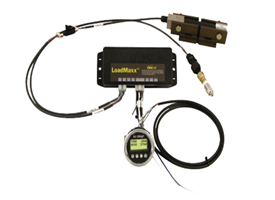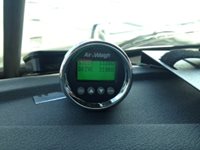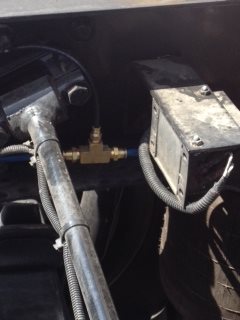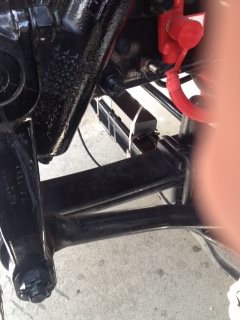In everyone’s career there will be a time when you need to weigh your truck to make sure you are within legal axle weights for your planned route. Most times there is never a truck scale quite as close as we would like. There was one customer I used to load at quite frequently that was always overweight loading bottled water here in Southern California. On the route to delivery I had to cross the infamous Banning scales, just 5 miles from the loading facility. This customer happened to have an on-site scale, but it was not for general use and was reserved for their own contracted company that ran their dedicated deliveries. The nearest scale was 15 miles in the opposite direction of where I needed to go, so even if they nailed the weight within legal limits the first time, I was set to lose 30 miles round-trip just to get scaled out.
 I no longer have to run this route (thank goodness) and have heard they finally let others use their scale now, but will not guarantee the weight is correct. Anyone that has been doing this for a while knows you can’t always trust what is on the bills in regards to weight. I know there has been a time or two when I have hooked up to that load with a pre-generated set of bills that said there was only 20,000 pounds in the box, but felt more like 40,000 pounds when I pulled away with it. It is this type of error and the fact that scales can be sort of sparse in Southern California that led me to my decision to
I no longer have to run this route (thank goodness) and have heard they finally let others use their scale now, but will not guarantee the weight is correct. Anyone that has been doing this for a while knows you can’t always trust what is on the bills in regards to weight. I know there has been a time or two when I have hooked up to that load with a pre-generated set of bills that said there was only 20,000 pounds in the box, but felt more like 40,000 pounds when I pulled away with it. It is this type of error and the fact that scales can be sort of sparse in Southern California that led me to my decision to
install an Air-Weigh system on my truck.
 With the Air-Weigh, I can now know the axle weights for my tractor to within a 300-pound accuracy level within around thirty seconds. It comes with a 3-year limited warranty and looks very clean after install (as you can see). The only thing I see on the dash is the LCD weight readout, with everything else being easily hidden. The technology used can even calculate net payload weights to verify against a shipper’s set of bills. Systems are reasonably priced too, costing just a little more than a set of air gauges on their most modestly priced tractor system.
With the Air-Weigh, I can now know the axle weights for my tractor to within a 300-pound accuracy level within around thirty seconds. It comes with a 3-year limited warranty and looks very clean after install (as you can see). The only thing I see on the dash is the LCD weight readout, with everything else being easily hidden. The technology used can even calculate net payload weights to verify against a shipper’s set of bills. Systems are reasonably priced too, costing just a little more than a set of air gauges on their most modestly priced tractor system.
The immediate benefits of having an on-board scale such as this (as listed at http://www.air-weighscales.com/Product/Display/quickload/) are:
- Eliminate or reduce costs and delays caused by weighing at a truck stop scale
- Eliminate or reduce scale fees and overweight fines
- Eliminate or reduce lost hours-of-service time
- Eliminate or reduce lost out-of-route miles and fuel
- Eliminate or reduce missed deliveries due to overweight delays
Had I have had this technology back when I was hauling those water loads a couple times a week, I could have saved myself a lot of unpaid miles, not to mention headaches too! I know having it now will save me stress in finding a scale when there are none available close-by, save fuel in not having to look for a certified scale, and will allow me to verify the weight of the load against the manifest. This is extremely helpful considering that 60%-70% of the loads I hook up to are already sealed and preloaded, not allowing me to see how proportionately they were loaded. This will also help me regain valuable time, which by the end of a day of heavy loads and not having to scale, could mean another extra load!
 |
 |
| Three-Way for Drive Axle Weight Off of Air Bags |
Center Hub for Spring Sensors That Weigh Steer Axle |